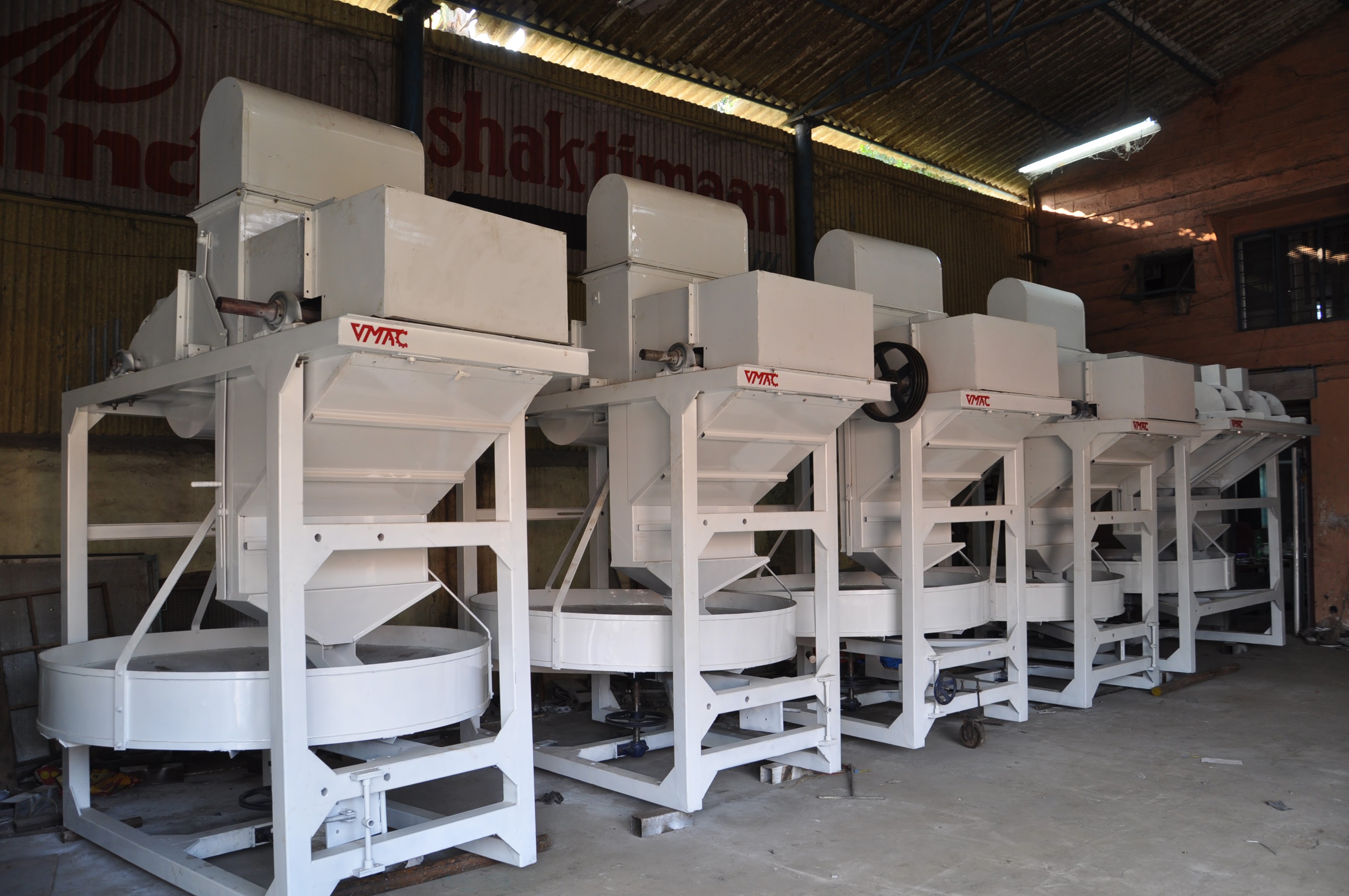
Production
Mastering Coffee Production
At Vmac Industries, we've mastered the balance between traditional craftsmanship and modern technology.
Learn how effective pre-cleaning safeguards your coffee plant from costly damage and ensures consistent bean quality throughout the production process.
Few steps in the coffee production workflow are as critical—and yet sometimes overlooked—as pre-cleaning. By removing impurities like stones, sticks, husks, and other debris before further processing, you not only shield your expensive machinery from harm but also improve the overall quality of your beans. This guide highlights why pre-cleaners matter, how they work, and how you can integrate them into your coffee facility to maintain a steady flow of defect-free beans.
Unwanted materials can jam, scrape, or prematurely wear down internal components of subsequent machines—such as hullers, pulpers, and destoners—causing unscheduled downtime and repair costs.
Removing twigs, parchment residue, and dirt early in the process ensures downstream stages focus on genuine bean refinement, leading to more uniform roasts and a cleaner cup profile.
Pre-cleaning at scale reduces manual sorting tasks, freeing up operators to handle more specialized duties. Fewer production stoppages for machine repairs translates directly to lower operational expenses and higher throughput.
A coffee pre-cleaner is typically the first station in a production line, and it relies on a combination of mechanical agitation, screens, and airflow to separate unwanted materials from the beans. Depending on the machine design:
Input: Beans enter the pre-cleaner via a conveyor or hopper.
Screening: Multiple sieves sift out different sizes of contaminants—from large sticks to minute dust.
Aspirating: Blowers or airflows whisk away lighter, surface-level debris.
The result: beans emerge significantly cleaner, ready to proceed to further processing (hulling, pulping, destoning, and so forth).
Adjustable Screens
Different coffee varieties or moisture levels may require specific mesh or sieve sizes. Machines that let you swap or fine-tune screens handle a wider range of bean conditions.
Robust Airflow Control
Effective aspirating systems ensure lighter particles—chaff, husks, or dust—are removed without accidentally blowing away valuable beans.
Easy Access for Cleaning
Bean residue can build up quickly. Look for pre-cleaners with hinged doors or removable panels to facilitate swift cleaning and maintenance.
Scalability and Throughput
Machine capacity should match or slightly exceed your daily processing needs, preventing bottlenecks at the very start of production.
Receiving Beans: Bulk loads or bagged beans should go straight to the pre-cleaner. Setting up a staging area helps regulate flow, ensuring the machine never gets overloaded.
Moisture Checks: Extremely wet beans can clump or stick to screens. Using drying beds or gentle mechanical drying first may optimize pre-cleaner performance.
Destoners: After pre-cleaning, beans are less likely to carry large stones that could damage sorting or roasting equipment, but a destoner can further refine purity by targeting heavier particles.
Gravity Separators: With most debris removed, gravity separators can focus on fine-tuning bean density and quality.
Hulling or Pulping: Fewer foreign objects ensures minimal wear on friction-based hullers and pulpers.
Frequent Inspections
Debris buildup can block screens or vent passages. Schedule routine checks—particularly during high-volume harvest seasons.
Lubrication and Wear Parts
Bearings, shafts, and blower motors need regular lubrication. Keep spare screens or belts on hand to mitigate downtime.
Operator Training
Ensuring staff understand machine settings—such as airflow strength or screen angles—prevents suboptimal cleaning or bean spillage.
Document Everything
Record throughput, screen changes, and any downtime. This data can guide future equipment upgrades or layout modifications.
A well-chosen pre-cleaner quickly pays for itself through:
Reduced Equipment Damage: Longer lifespans for hullers, roasters, and conveyors, minimizing repair bills.
Higher Bean Yield: Fewer damaged or dirty beans get discarded.
Labor Efficiency: Less manual inspection or sorting.
Enhanced Reputation: Clean, consistent beans help roasters confidently market higher-grade coffee.
While exact ROI varies, many producers see a significant return once they factor in lower repair costs and improved production flow.
A medium-sized coffee producer in Central America upgraded from manual sorting lines to an automated pre-cleaning station. The result:
30% Reduction in overall labor costs tied to manual debris removal.
Fewer Unplanned Downtimes because stones and large objects no longer damaged hullers and conveyors.
Consistent Bean Quality that fetched better prices in specialty coffee circles due to lower defect rates.
Within a year, the machine’s cost was recovered solely through lowered maintenance bills and labor savings—any additional profit from improved bean quality was an added bonus.
In an era where coffee producers face increasing competition and tighter margins, pre-cleaning is a critical first step that sets the tone for the entire processing line. From protecting machinery against harmful debris to boosting overall bean quality, a reliable coffee pre-cleaner delivers immediate and long-term benefits. By selecting the right model, integrating it seamlessly into your workflow, and committing to regular maintenance, you’ll safeguard your equipment investment and keep your production line humming at peak efficiency.
Lastest blog posts